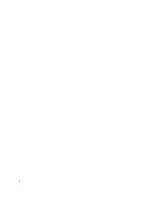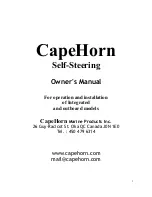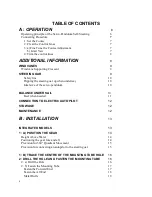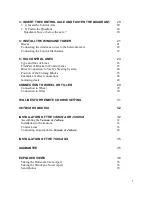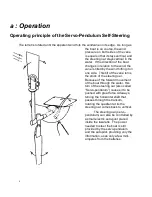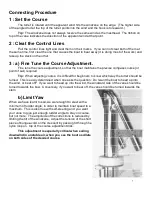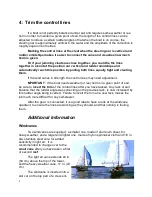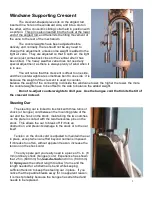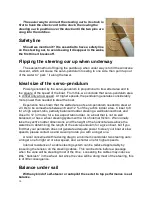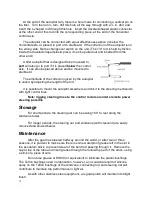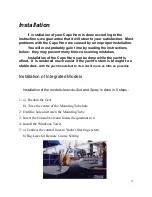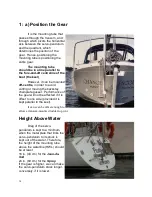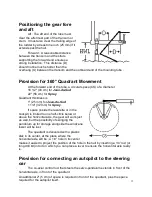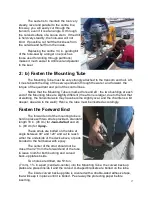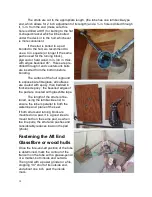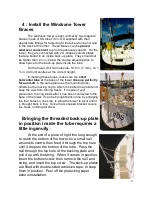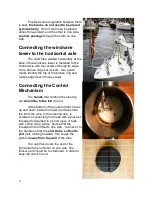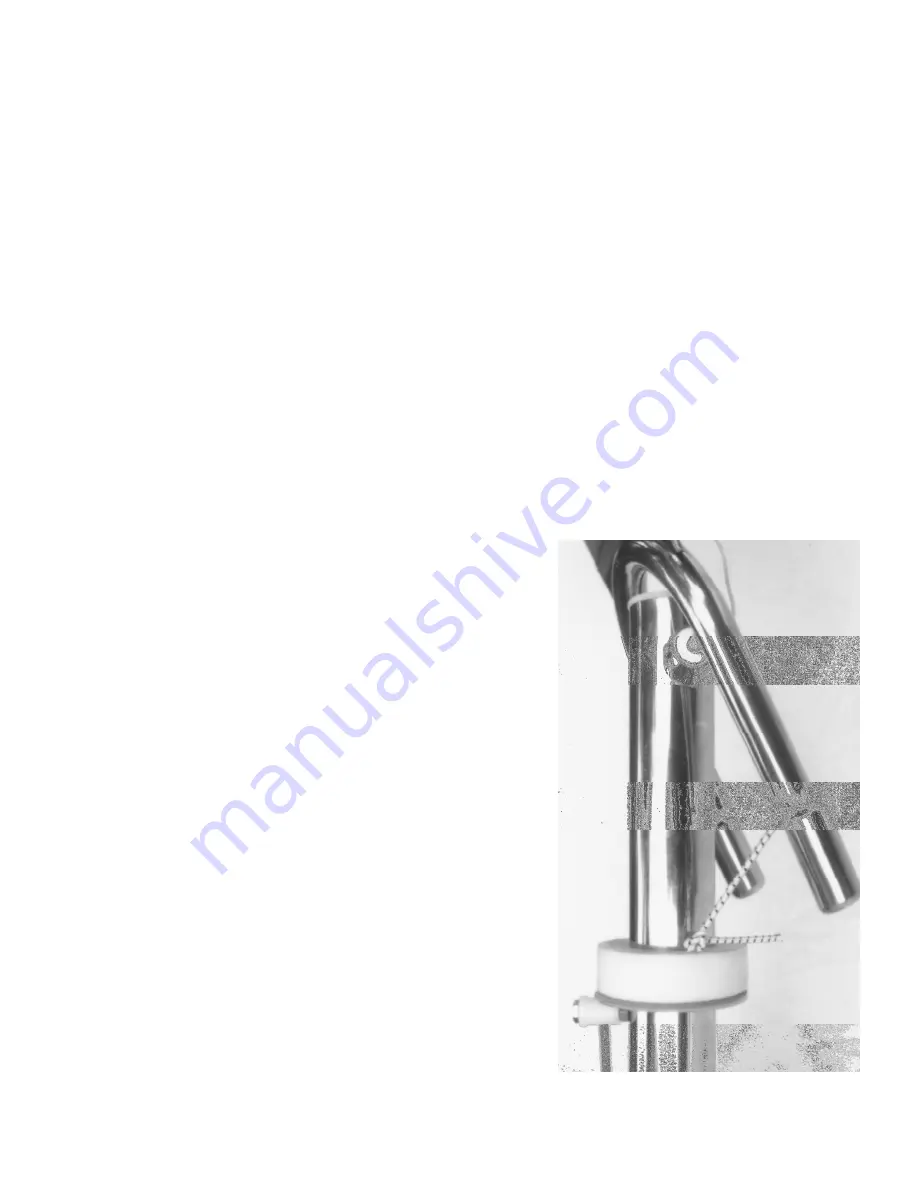
7
Connecting Procedure
1 : Set the Course
The turret is rotated until the apparent wind hits the windvane on the edge. (The higher side
of the angled rod at the top of the turret points into the wind and the hook is to leeward.)
Tip :
The windvane does not always receive the same wind as the masthead. The ribbon on
top of the vane indicates the direction of the apparent wind at that point.
2 : Cleat the Control Lines
Pull the control lines tight and cleat them on their marks. If you can not cleat both of them at
the same time, first cleat the one that causes the boat to bear away (it is doing most of the work) and
take up the slack on the other.
3 : a) Fine Tune the Course Adjustment.
Fine tune the course adjustment, so that the boat maintains the precise compass course (or
point of sail) required
Tip :
When adjusting course, it is difficult for beginners to know which way the turret should be
turned. This is easily determined when one asks the question : Do I want the boat to head up into
the wind, or bear off? If you want to head up into the wind, the windward side of the vane should be
turned towards the bow. Conversely, if you want to bear off, the vane should be turned towards the
stern
b) Limit Yaw
When we have learnt to sail, we were taught to steer with a
minimum of rudder angle, in order to maintain boat speed to a
maximum. This is also true with self-steering and you want
your vane to give just enough rudder angle to stay on course,
but not more. The amplitude of the corrections is reduced by
limiting the tilt of the windvane. Adjust the tension of the short
piece of bungee-cord on the crescent by passing tit through he
nylon loop on
top of the course adjustment disk.
This adjustment is especially critical when sailing
downwind in unstable air, when you see the boat oscillate
on both sides of the desired course.


